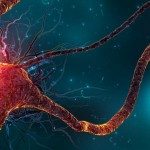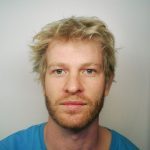M2 project: Structural basis of neural computation and behavior
Behavior and decision-making are determined by physical processes taking place in the complex environment of the brain. Experimental techniques have reached the point where it is now possible to map the complete wiring diagram (the physical connectome) of the brain of simple model organisms at the level of single synapses, and to control the activity of individual neurons in live animals and observe the resulting behavior. Together this offers the occasion to reverse engineer the physical basis of behavior.
A key question in modern neuroscience is: What constraints do the structure of the connectome impose on an organism’s capability to process information and encode behavior? The Drosophila melanogaster larva is an ideal model animal to address this question: the full volume of its brain, containing ~12,000 neurons, has been imaged at atomistic resolution and a vast genetics toolbox makes it possible to target and control individual neurons in freely behaving animals [Jovanic et al., Cell (2016)]. Large-scale screens have revealed the individual influence of thousands of neurons on the behavior in millions of larvae, and several microcircuits controlling specific behavioral decisions and actions have been identified.
This projects aims to employ computational, statistical, and machine learning methods to investigate how the circuitry of the drosophila larva’s brain influences how it encodes behavior and whether its structure is optimized for the computational tasks it must perform to survive. The project involves several subparts, which may be investigated individually or collectively as time allows and depending on the interests of the student:
- It has been hypothesized that neural computations are performed by a restricted number of canonicalmicrocircuits, which we would then expect to be statistically overrepresented in the connectome. To test this hypothesis we will quantify the global and local abundances of experimentally identified neural circuits as well as theoretically proposed ones by comparing against nested series of different network null models within a microcanonical framework [arXiv:1806.04032]. The main challenges to overcome are the computational complexity of uniformly sampling a constrained ensemble of random graphs and of counting the number of appearances of a subgraph in the connectome (linked to the graph isomorphism problem).
- To understand how the structure of identified neural circuits influences how they encode behavior, we will train neural networks with the same structure as the empirical circuits to solve the same behavioral tasks that these circuits are known to do (e.g. decision between mutually exclusive actions, generation of behavioral sequences). Comparing how the behavior is encoded to experimental data will allow us to gauge to which extent the brain function of drosophila larva is determined by its structure. Furthermore training random or regular networks to perform the same tasks will allow us to gauge to what extent the structure is optimized for learning and encoding the behavior.
- To generate behavior an animal needs not only to encode a representation of this behavior, but must also be able to process external physical stimuli and control motor patterns in order to respond to them. Thus an extension to Part 2 will be to create a virtual drosophila larva in a physically realistic environment, and to use reinforcement learning on the neural network defined by its connectome in order to generate synaptic weights that encode realistic behavioral patterns.
Please contact christian Vestergaard (christian.vestergaard@pasteur.fr)






